Capital:
Athens
Currency
Euro
Best time to visit:
The best time to visit Greece is from Easter to mid-June and from late August to mid-October, when the weather is mild. In July and August you have to deal with crowded beaches and crowded archaeological sites, while in Athens and in the hinterland the heat is fierce.
In a word:
Kalimera (good morning)
Vaccines
None
Warnings:
- Avoid long walks: the sun is strong and many paths are steep and stony.
- Protect children from the sun with suitable clothing and making sure they are always well hydrated.
At the table:
In Greece all the diners share the various dishes brought to the table, not only the mezedhes (appetizers), but these in particular give the opportunity to taste many things in a fun way. Sauces, feta, salads and grilled sardines are very popular with visitors. The tavernas are good value for money; you have dinner starting at 21!

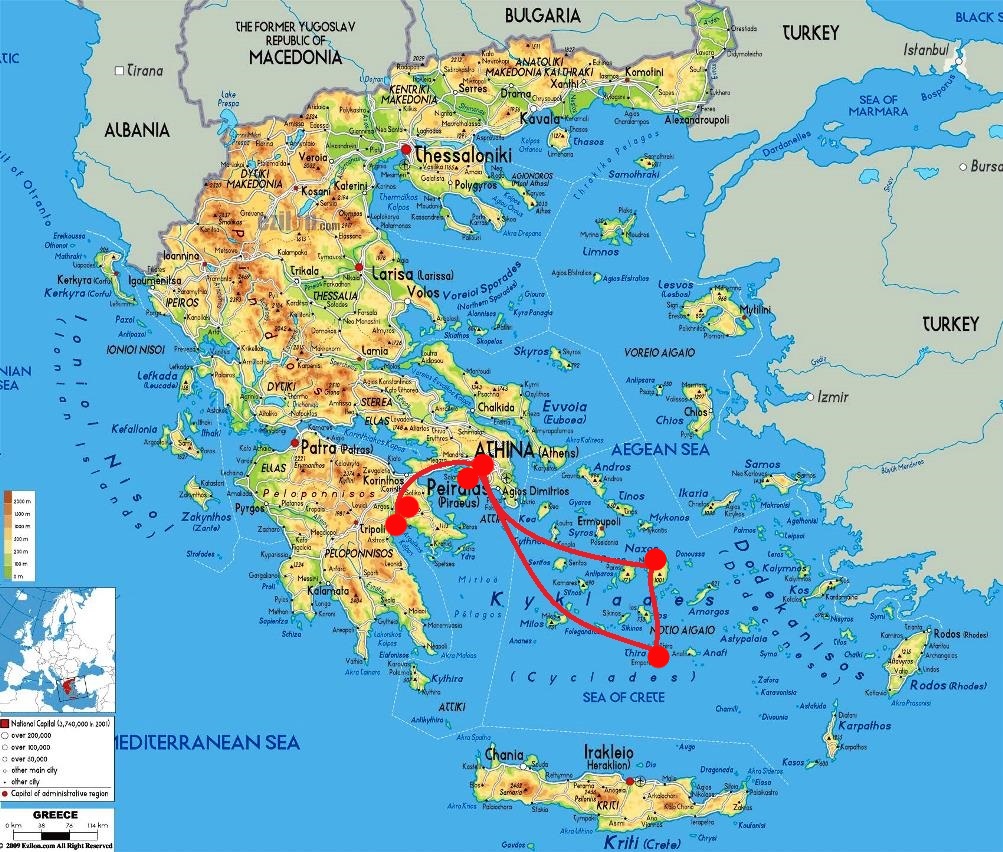
Essential experiences:
Enjoy a wonderful greek salad with the best feta and olive oil in the surroundings of Monastirakis; Admire a romantic sunset while sipping a glass of ouzo from a terrace in Santorini; Take a step back in time by climbing the hill that leads to the ancient castle of Nafplio.
Greece is one of the most interesting countries in Europe without a shadow of a doubt. A single trip is not enough to be able to say that you have visited and lived it. Wherever you breathe history, you breathe classical art and you cannot fail to imagine the epic deeds that made it famous forever.
For us, this was a very particular journey because it was the first in which we embarked on adventure: backpacking and stroller in our hands, with our 10-month-old baby!
Despite the great travel experience gained in the field and over time, we found ourselves facing many new and characteristic situations of a trip with a newborn baby! We tried to organize a three-week itinerary that was as varied as possible but within the reach of such a small girl who still uses a bottle! After visiting the magnificent Athens, by bus, we moved to a pearl of the Peloponnese: Nafplio and the epic Epidaurus; a trip is not such if there is not a bit more wild adventure, and here we are in the wild beaches of Naxos after many hours of ferrying in the Aegean Sea between the spectacular Cyclades islands. Time to relax, what could be better than posh and elegant Santorini before leaving the Hellenic nation?
Il nostro itinerario suggerito (20 giorni) | |
four days: | Athens |
three days: | Nafplio |
one week: | Naxos |
three days: | Santorini |
| three days: | Athens |
Greece: the cradle of democracy, the Olympics, civilization, mythology, great philosophers and thinkers ...
The mythological, ancient Greek flag flutters imperiously in the small square of Monastiraki.
The Acropolis observes you severely from above ... majestic columns testifying that in another era Greece was "magna", frenetic tourists everywhere, the smell of lamb or koulouria (the characteristic sesame taralli), vendors inviting fruit that attract the crowd by screaming ...







We immediately get into the Flea Market of Monastiraki: many shops sell old or simply old objects, useless junk or small finds together with a myriad of souvenirs!
A plate of Greek salad (with a feta and sublime olives) and a lamb souvlaki (meat skewers) from Thanasis officially welcome us and make us finally feel in Greece!
Ancient Agora. You immediately have the impression of entering another era ... it would seem almost normal to meet Socrates, serious leaning against a column while exposing his thoughts or Saint Paul preaching Christianity.
You enchant yourself to admire the stoa (two-story covered gallery) built by Attico, king of Pergamum, 150 years before the birth of Christ or the temple of Hephaestus, the greatest Doric example in all of Greece ... or the beautiful Byzantine frescoes in the church of the Holy Apostles ...

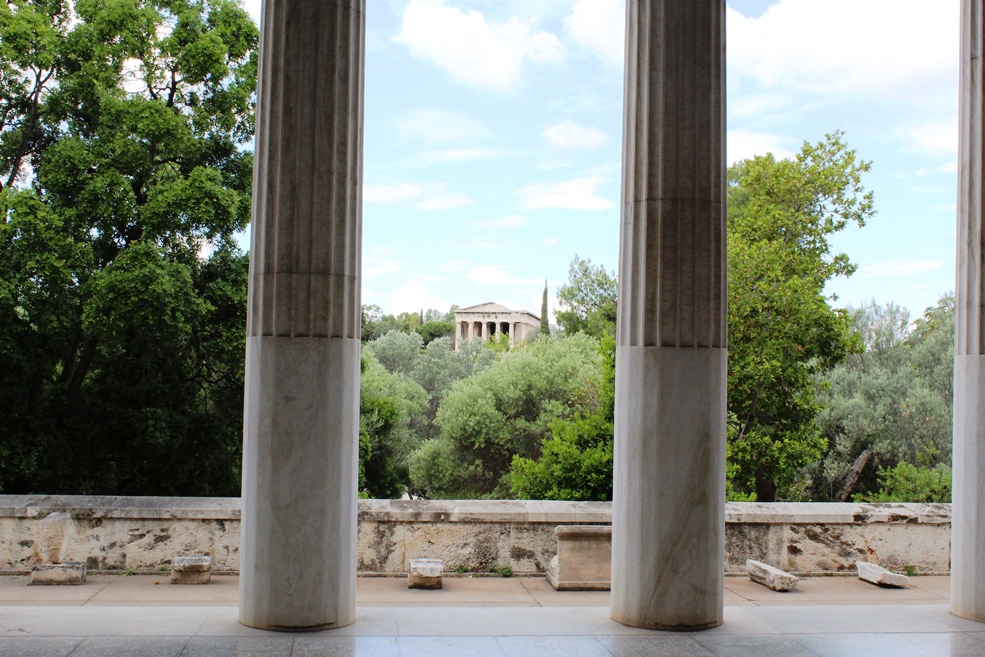


Not far away is the Library of Hadrian and the Roman Agora with the door of Athena Archegetis and the Tower of Winds, each side faces a cardinal point and is characterized by a relief figure representing the wind associated with the various directions.
At Syntagma Square, every hour there is a changing of the guard, we cannot miss it. The military mustachio ceremony is very solemn and felt as well as choreographic given their particular march!
Nora looks around sitting in her stroller, looks at the stalls, street vendors, greets everyone by dispensing many smiles!




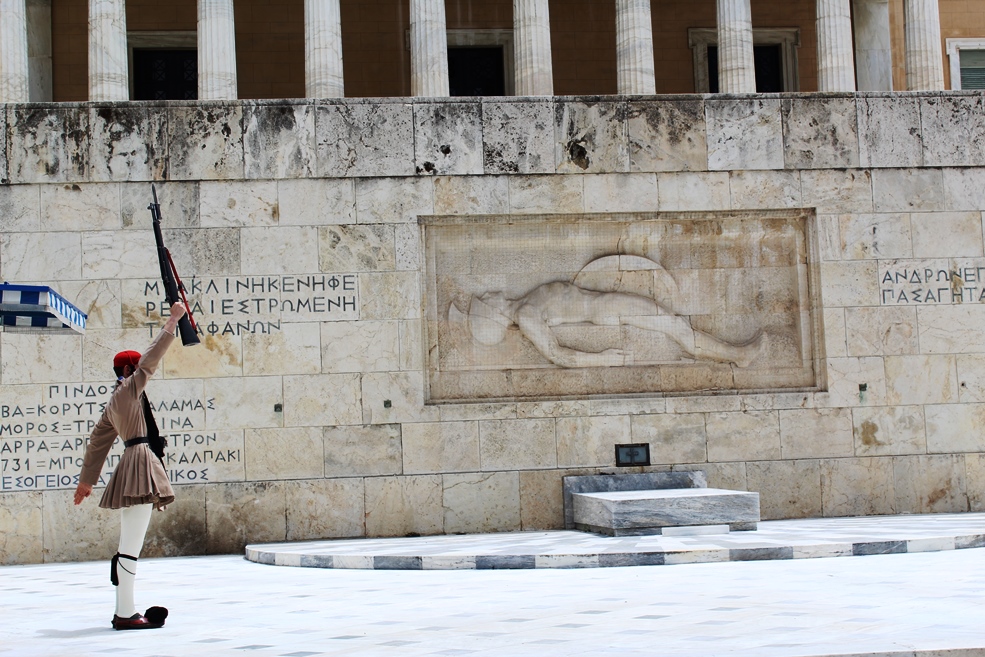

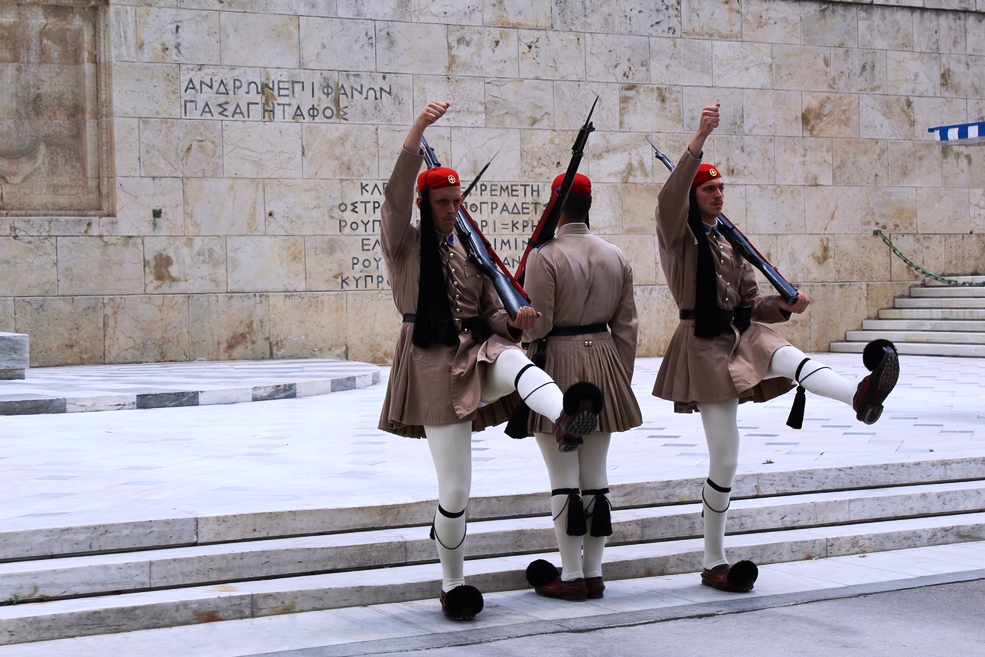

In the afternoon we get lost inside the large Varvakios meat and fish market.
A little impressive the hanging lamb heads in plain sight ... we can't help but buy different types of olives and we don't hold back when it comes to tasting here and there.
Today it is drizzling but we don't get discouraged.
We visit the wonderful Acropolis Museum, modern and well organized, we learn so many things about the history of the Parthenon!
Even Athens, like many other cities in the world, has been conquered by many peoples over time, and here this ancient temple of the Hellenic gods is transformed first into a Church, then into a mosque until it is completely destroyed and plundered ...
We admire the many ancient exhibits on display, gold coins, pottery, shields, weapons, fragments of statues ...
We have lunch at Athenswas, an exclusive restaurant right in front of the Parthenon!
We taste some traditional dishes but revisited in a very modern key and with a creative touch here the Greek salad becomes an "ode to the Greek salad" or the delicious sea bass and finally an excellent "galaktoboureko"! All delicious. After all, a nation can also be discovered through taste and its divine cuisine!
Finally the Acropolis. It is very exciting to walk those ageless paths that have witnessed the transformation of humanity since its creation (seventh century BC) until today ...
We observe these perfect and proud columns that for centuries have soared towards the sky keeping under control the immense city with white houses.
According to the myth, Athena argued with Poseidon the honor of giving the city its name. The Olympian gods decreed that the new settlement should take the name of the divinity who had left mortals the most precious legacy. Athena (also goddess of wisdom) gave birth to an olive tree, a symbol of peace and prosperity; Poseidon (god of the sea) struck a rock with his trident and turned it into a horse.
The gods believed that Athena's gift would be most useful to the city by providing food, oil and wood to its citizens.
Ceramic. City cemetery from the 12th century BC until Roman times, it was originally a small settlement inhabited by potters, attracted by the clay of the Iridanos River. Due to frequent floods, the area was abandoned and transformed into a necropolis.
From there we go to the temple of Olympian Zeus. The path from Monastiraki to Syntagma Square is very touristic, rich, lively ... almost out of tune and contrasts with the various alleys that, more humbly, branch off in the various directions perpendicular to it.
In the latter, you see the real Athens, the one that trudges, that of the closed and abandoned shops, of the hotels bolted, dusty and forgotten, of those who sell iPhones or Rayban tarot cards on the street or very poor chinoiserie, of Africans with bracelets who want to give you pretending to be Jamaican , the Greece of the economic crisis, of the new poor who almost collides with the beautiful and vain Ermou Street.





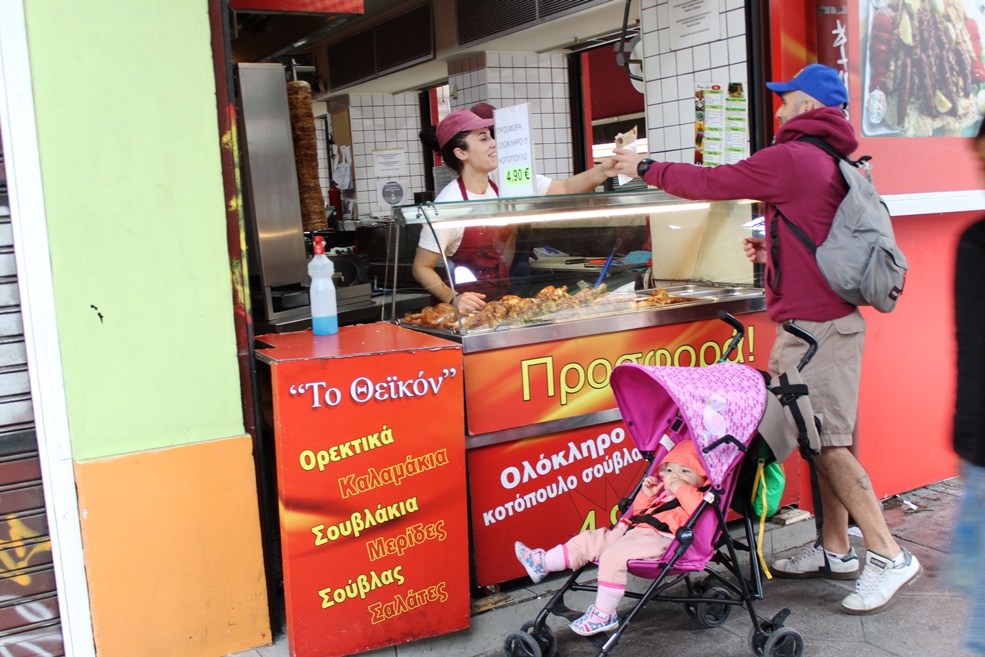
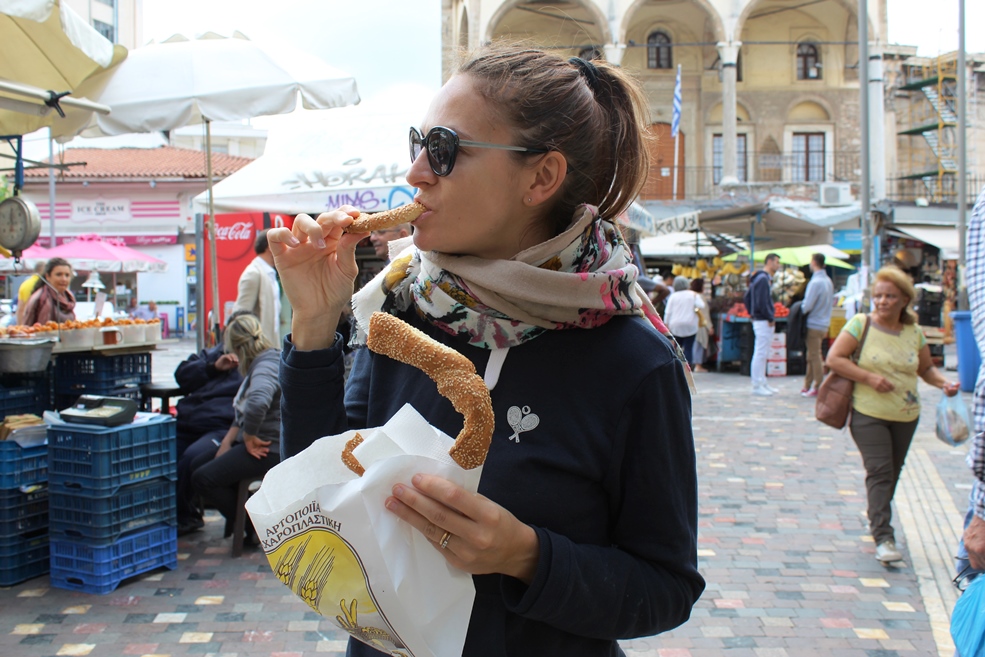
The Temple of Olympian Zeus is the largest in Greece. The works for its construction lasted about 700 years and even ended with Adriano.
The latter loved Athens very much, although, like all Roman emperors, he had many works stolen from the city to bring them to Rome. The arch that bears his name is a solemn marble monument that stands at the intersection of the busy Leoforos Vassilissis Olgas and Leoforos Vassilissis Amalias.
The ancient history of Athens is too tied to mythology so that, at times, it is almost impossible to distinguish myth from reality.
Today we leave the Greek capital for Nafplio!
We enter the Peloponnese through small villages, thus having the opportunity to savor and taste some of the traditional Greece that we were looking for. And in two hours by bus we are at the destination.
Villages of a few simple houses, old with biblical faces, stick in their hands, too large jackets sitting in a circle chatter like ancient thinkers; an old woman dressed all in black comes home with a bag of vegetables; Orthodox altars appear here and there; goats graze a bush burned by the sun, endless fields of olive trees ... many scenes that seemed taken from films such as: "Mamma mia" or "Captain Corelli's mandolin"!
We stay in a suite of the Grand Sarai Hotel, a wonderful hotel located in the heart of this beautiful town.


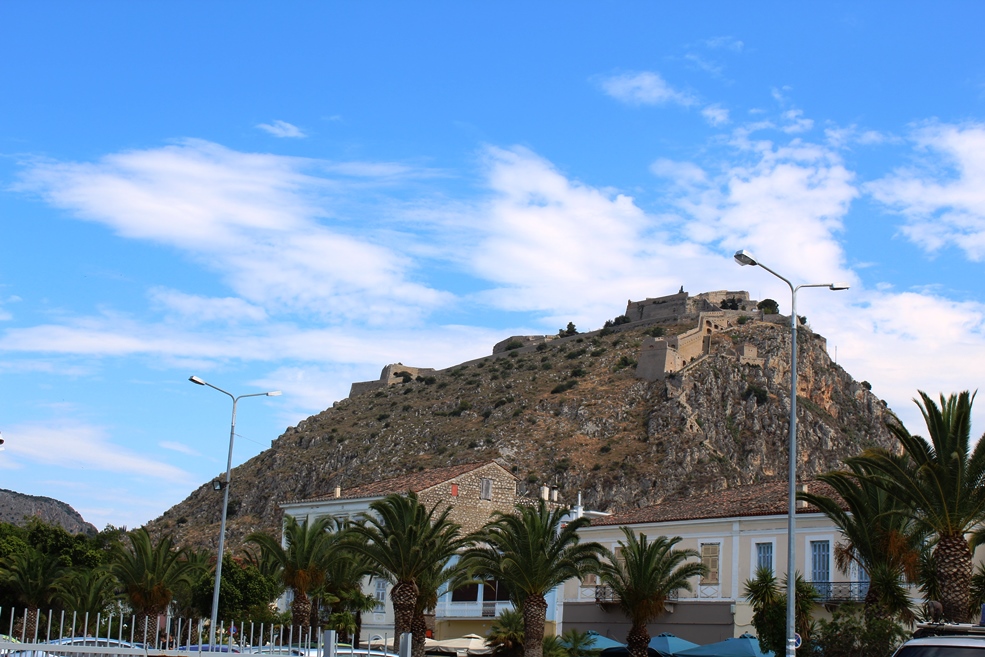




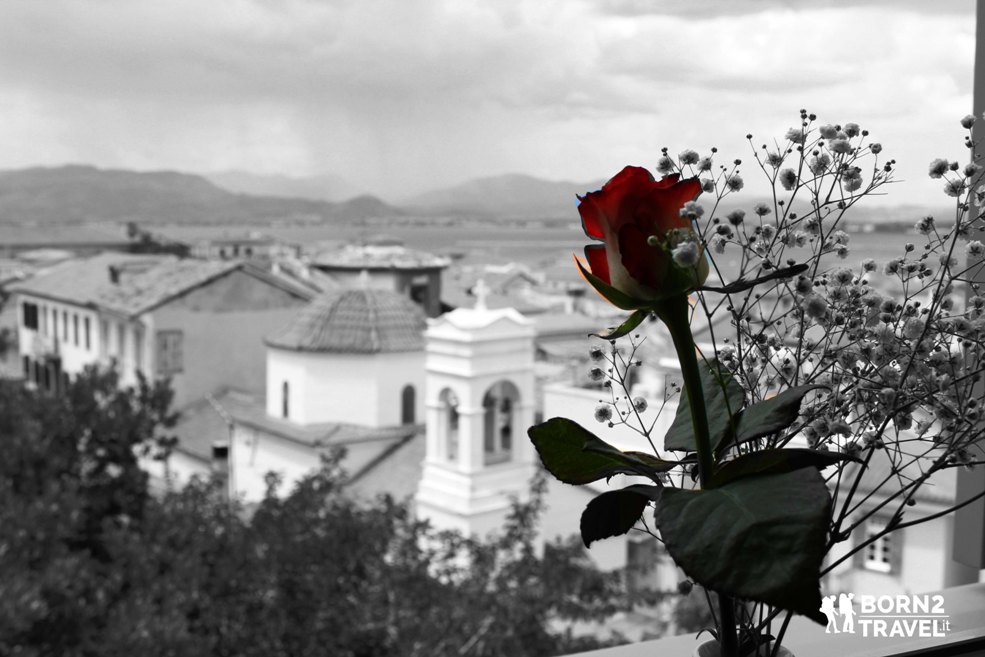
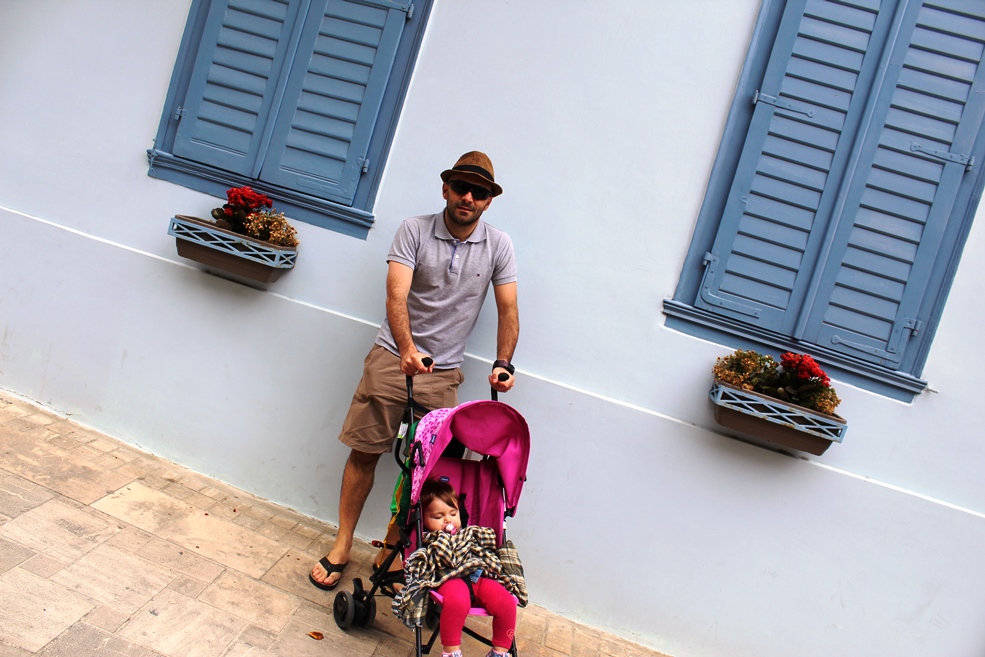




A row of restaurants runs along the promenade and we choose one at random! A good moussaka (typical dish similar to a mix between our parmigiana and lasagna) and the usual Greek salad make us, as always, love this Mediterranean cuisine!
Last but not least: some loukoumades, small donuts in the shape of balls served with honey and cinnamon, to conclude this delicious lunch!
Nafplio is a maze of narrow streets where pastel colors are the masters, rhododendrons hanging down from above, kittens sleeping peacefully on long white stairways, the scent of olive oil soap and above all the wonderful views at every corner.
It is located in a splendid position on a small port dominated by the fortress of Palamede; the town is refined by graceful narrow winding lanes, elegant Venetian-style buildings and neoclassical palaces.



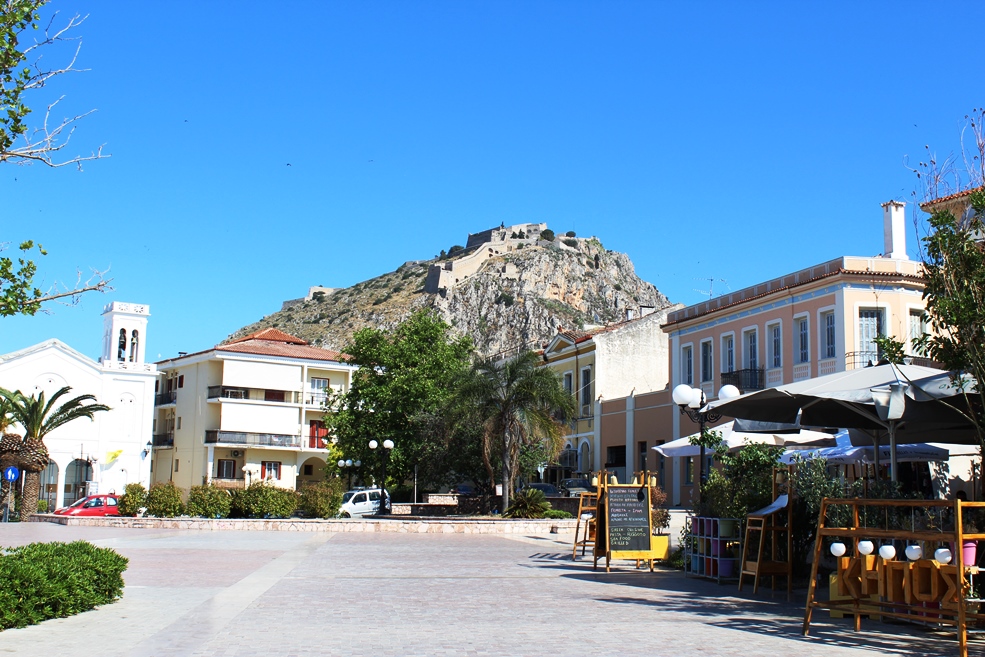





Epidaurus is 45 minutes away by bus. This town enjoyed great fame and consideration throughout the Greek and Roman world as a place where miraculous treatments were carried out.
People came from far away to go to the sanctuary of Asclepius (God of medicine) and get healed.
Today's visitors are drawn to this archaeological site especially for its extraordinarily well-preserved theater.
The theater of Epidaurus is famous for its excellent acoustics: the sound produced by a coin dropped in the center of the proscenium can be heard even from the most distant stands.
Palamede Fortress dominates the city from above! This vast and spectacular citadel stands, in fact, on top of a rocky boulder from which you can enjoy a wonderful panorama of the sea and the surrounding hinterland.
Built by the Venetians, it is a masterpiece of military architecture, its walls enclose a series of independent bastions located in different but strategically important places on the hill; you can also reach it on foot by climbing the, apparently infinite, steps ... and despite Nora we begin the climb ... she, enclosed in her baby carrier, occasionally glanced out and about ...
The exact number of steps is being discussed, according to the premises there are 999 but, in reality, there should be many less!
The view and the landscape repay you for the effort of the climb ...

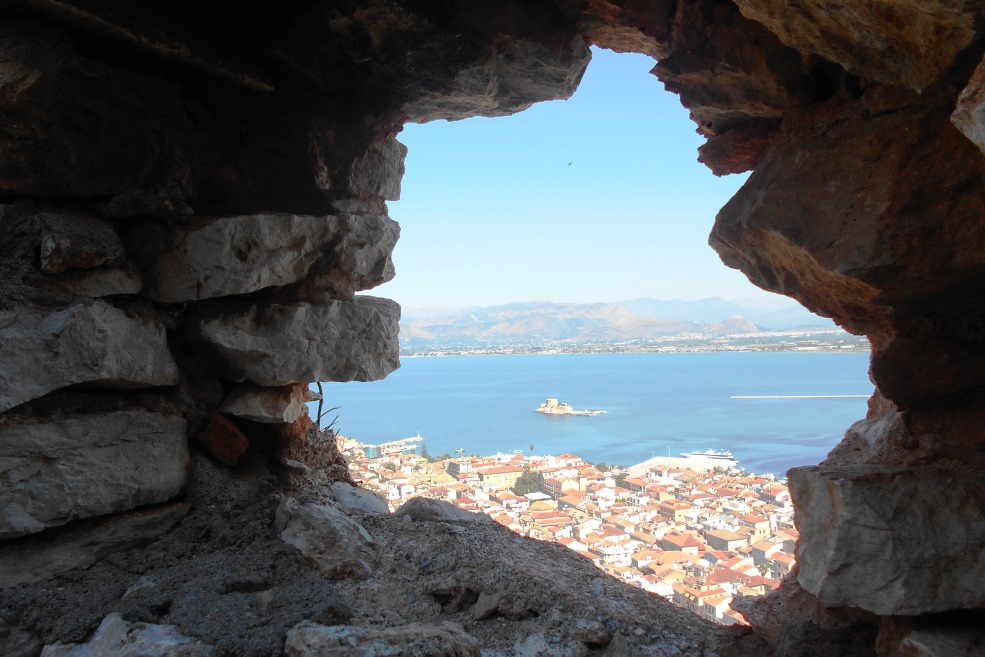




A day of mere transfer ... from the Peloponnese we move to what is considered the most dangerous area in Greece: the notorious port of Athens!
Ktel, the general bus terminal of the capital, is hectic and we struggle to find the right stop for our bus, outside the structure. Among other things, we take it in the wrong direction and end up spending more than an hour traveling by bus ... Nora even has lunch between stops!
We will spend a night here, near the port of Athens, since tomorrow morning we will have the ferry to a wonderful island in the Cyclades.
We decide to immediately immerse ourselves in the chaos of the port area between trafficked taxi drivers, ugly faces, sailors and shady iphone7 sellers!
The first impact is decidedly negative but just take the right avenues, the pedestrian areas framed by many trendy boutiques that soon our impression changes and we find ourselves appreciating Piraeus too!
A good "Poseidon" lunch with souvlaki and chicken kebabs, romantic promenade with small moored yachts, trendy bars populated by Athenians and orange trees (dirty with smog) along the entire avenue!
I write from the terrace of our apartment! The sun is going down and a pleasant rose-scented air caresses my face ...
We are in Plaka, on the island of Naxos, the first of the two Cycladic islands that we will visit on this trip; we are guests ofAnnio Studios! It is a very new structure with pure white walls, pastel-colored interiors, everything smells of wood, clean, the decor is very minimal, it gives you a sense of peace!
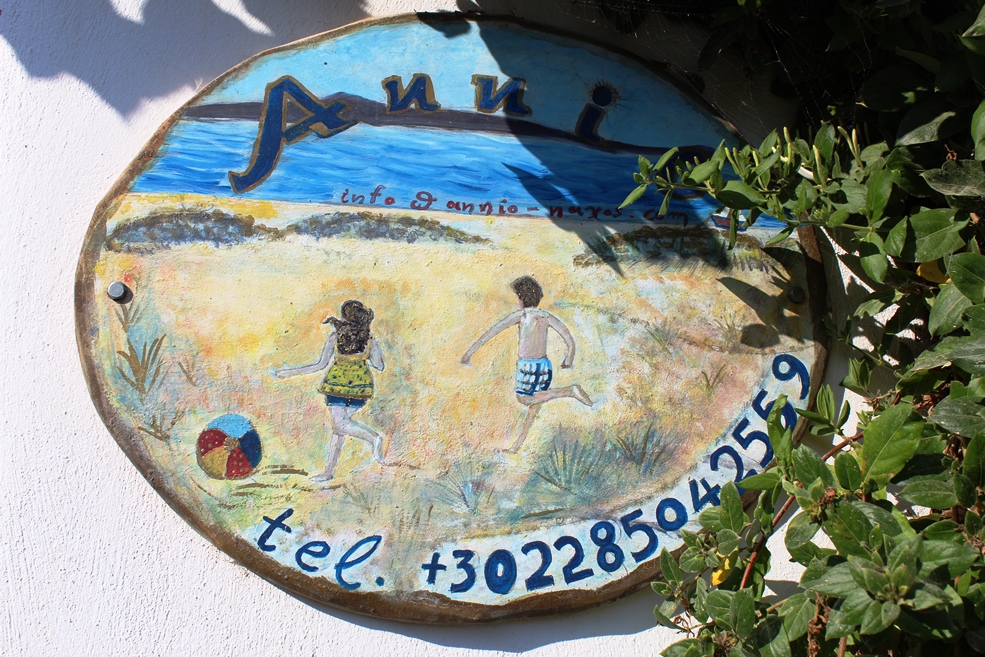


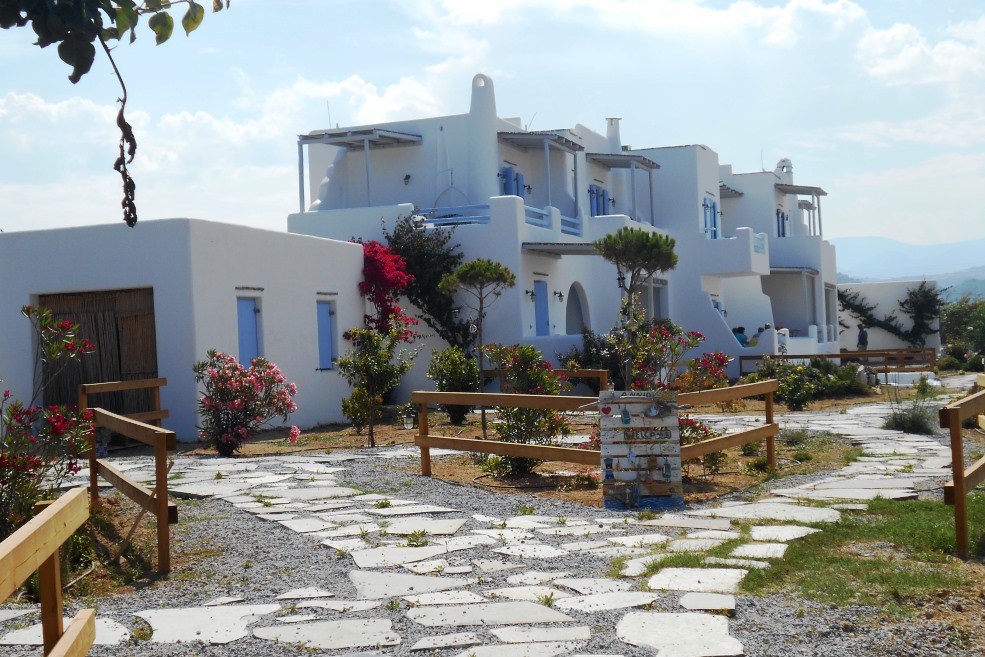




There are places that you have never heard of but that once discovered, you would never want to leave!
Even today: day entirely dedicated to the sea ... a small beach bathed by the crystal clear Aegean ...
After playing for a while with Nora: she fell asleep giving us a couple of hours of break! Traveling with children, especially young ones, is not at all simple or relaxing, therefore, every moment is good for carving out a bit of healthy relaxation!
In the afternoon we reach Agia Anna on foot, the search for a mayireia (traditional tavern) for dinner becomes a reason to wander aimlessly and here, after passing a large hedge, a small nudist beach, we come out in front of one of the most orthodox chapels. picturesque never seen!
Here is our sweet routine of Naxos: comfortable wake up call, light breakfast, hot baby bottle, four steps and we are by the sea, two coffee milkshakes, games with Nora on the shoreline, relax on the beach, snack with Greek salad and sunset walk ... after all, a vacation break, within a long journey, it always takes!



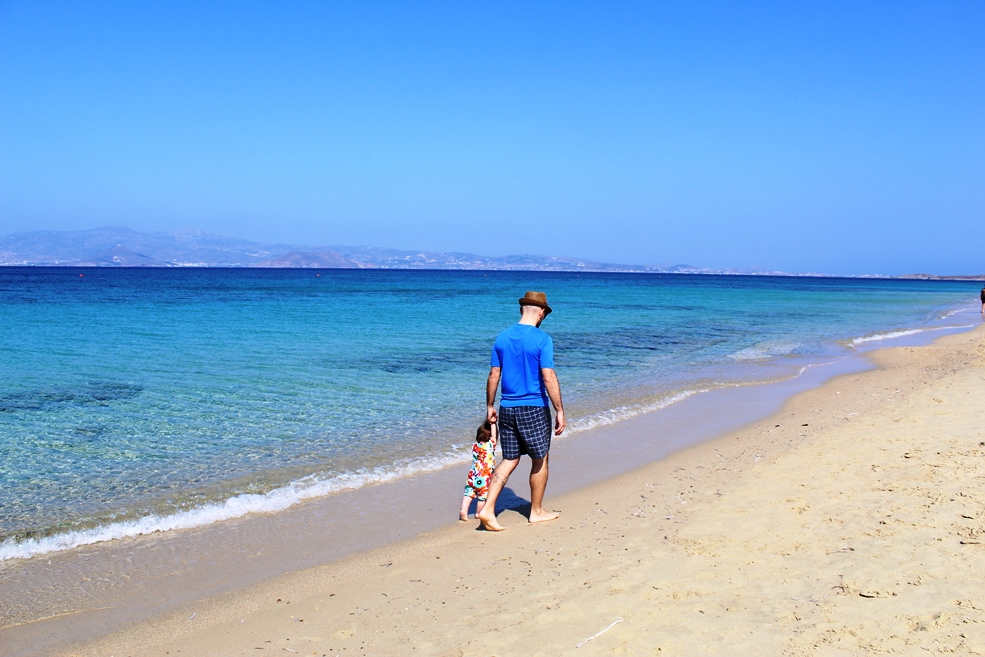


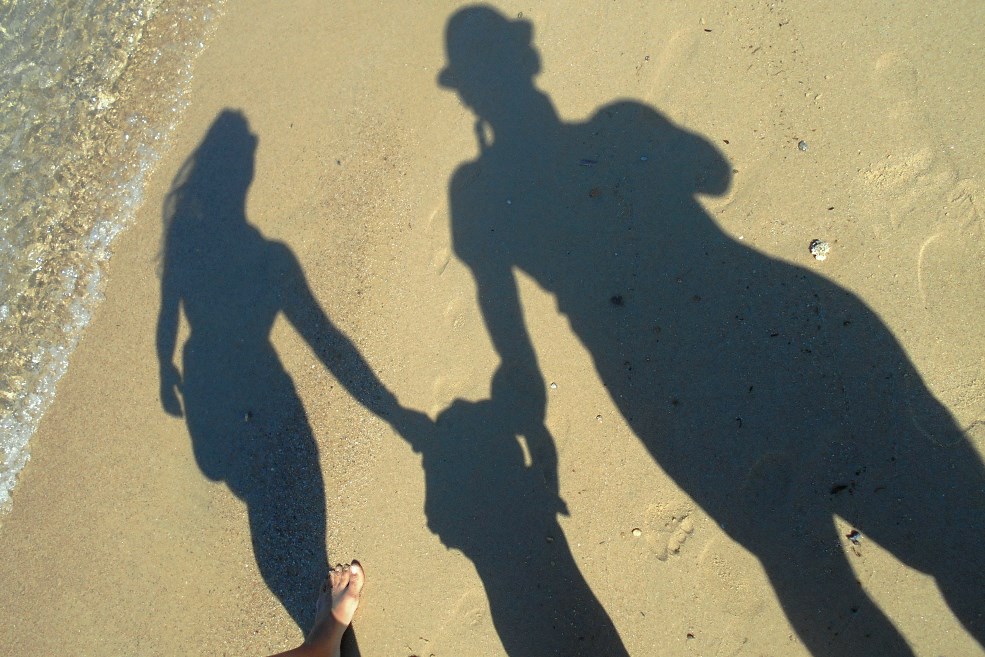


After several days in the wild Naxos it's time to turn the page! Let's go by ferry to a very tourist and posh destination in the Cyclades!
Picturesque! There is no more suitable term to try to describe the magical Santorini.
It's just like I expected!
Santorini is a series of labyrinthine cobblestone streets and traces of donkey manure; these small paths rise and fall, each step is a new glimpse, a romantic and sweet panorama; its streets go up and down again wrapped in their pure white interspersed with an intense blue; they cross for a moment but then go up to the top of this volcanic island or dive into the sea ... on one side an oil painting, on the other shops selling souvenirs, often very expensive ...

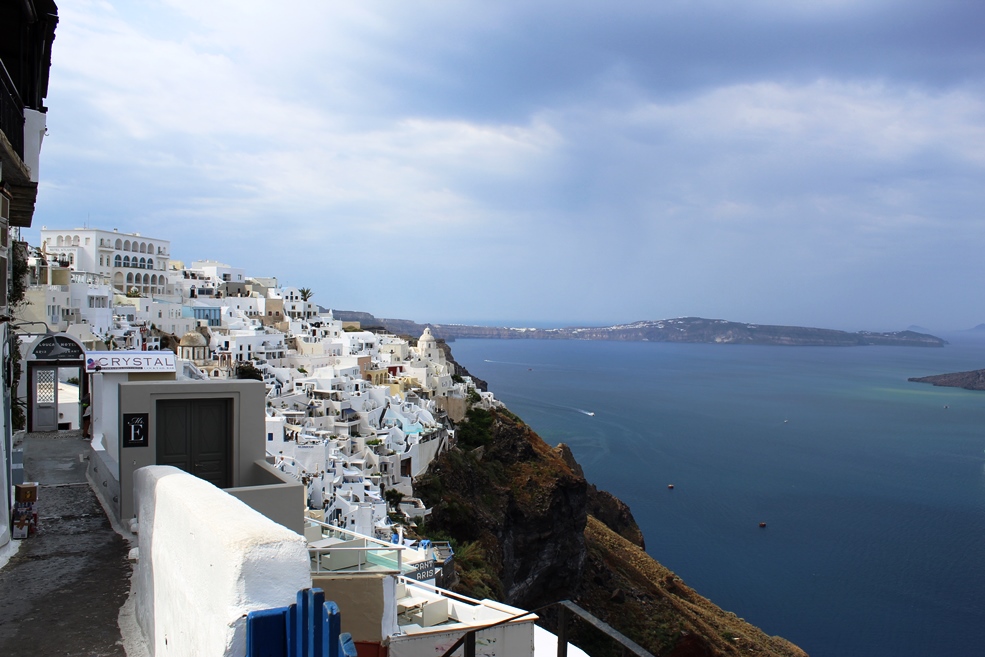

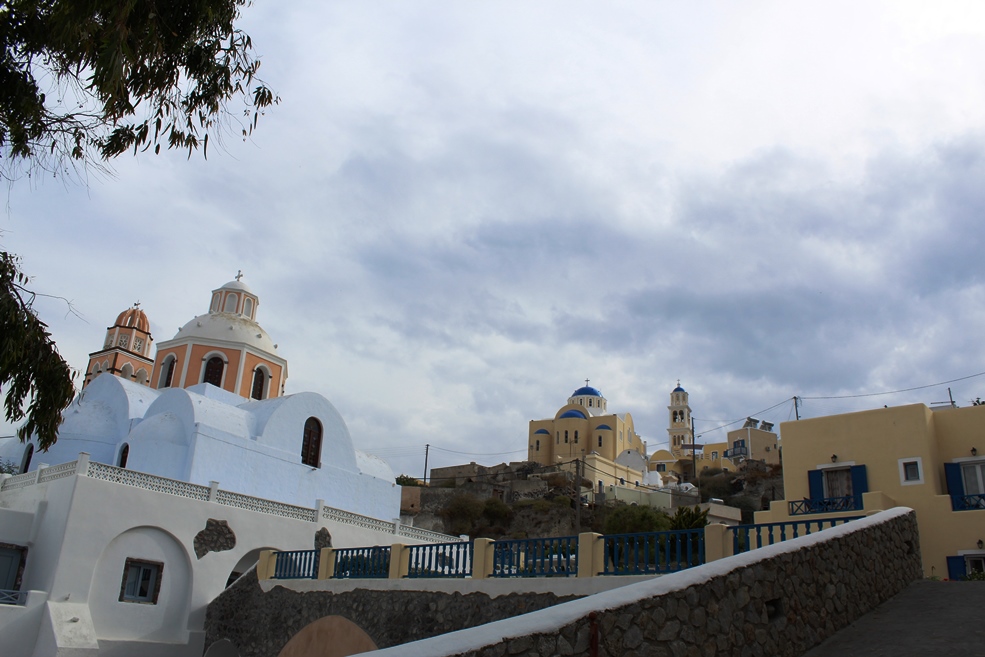



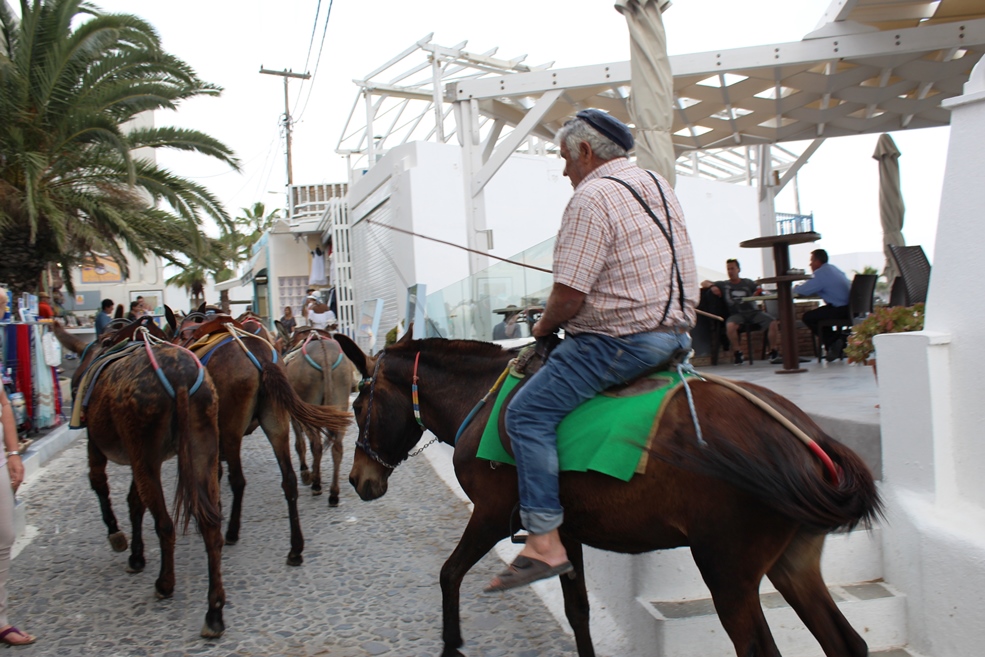




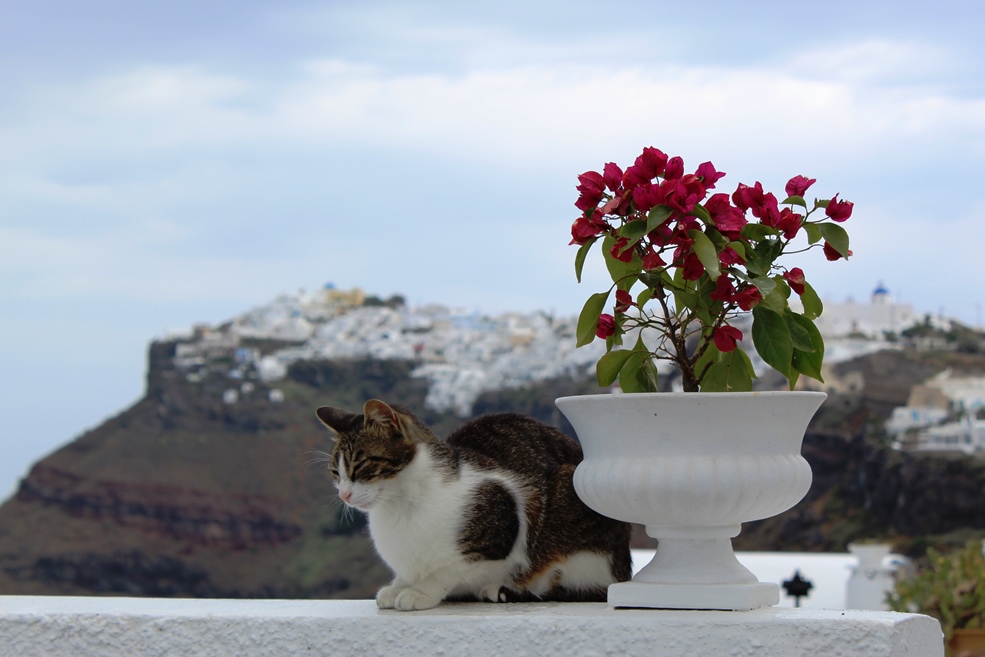

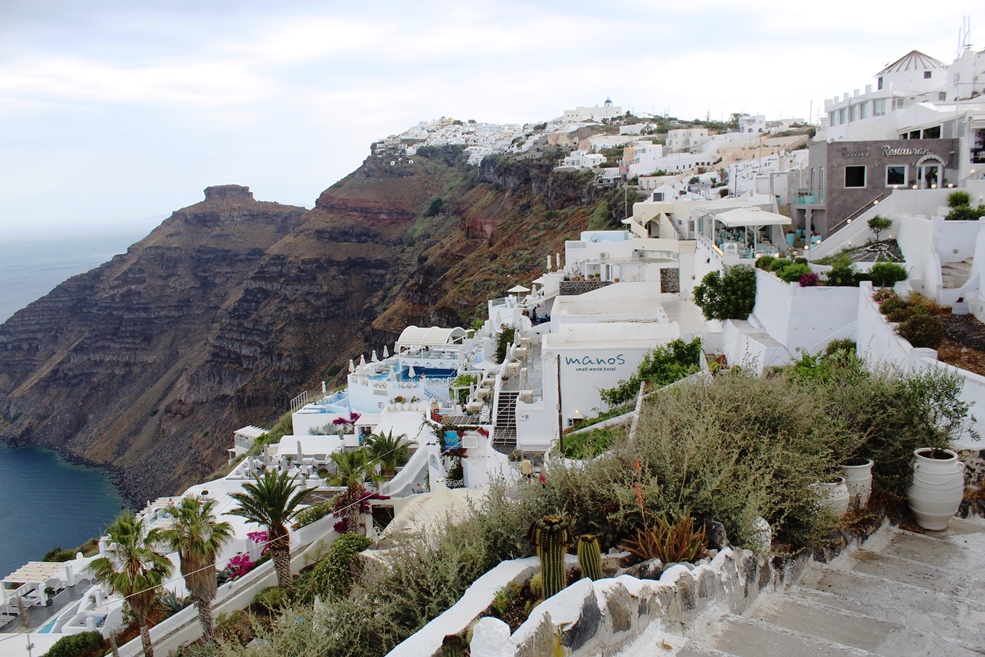
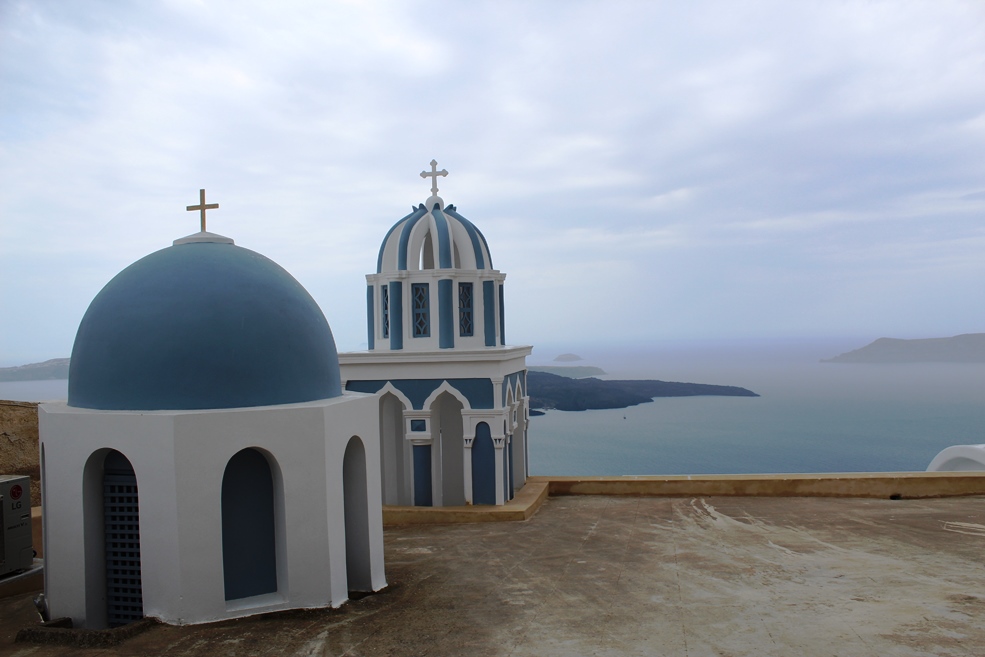


The pungent taste of homemade tzatziki (Greek yogurt with cucumber and garlic) and the aroma of grilled souvlaki are just the tasting of a gastronomic repertoire to be discovered!
We stop by the historic "Mama's House" and also enjoy the "domatokeftedes" (tomato meatballs stuffed with vegetables) and an excellent "saganaki" (fried goat cheese)!
Tomorrow we leave!
... and after a van, a bus, a ferry, a train, a subway and 20 minutes walking around looking for our new Athenian apartment: here we are in the Greek capital!
We are in the Keramikos area, which we already know well. The area is very pretty, lively, full of alternative places each with its own personality; there are no tourists around, only Athenians who sip the ouzo (famous anise liqueur), this, in addition to being drunk as an aperitif, has become a means of spending some time lazily with friends!
We get lost in the stalls of Thissio, today is Saturday morning and there is the antiques market with old objects, stamps, coins, military relics, books etc. We enjoy this last day as an Athenian!
The streets of the center as usual teem with tourists, in Syntagma Square they are organizing a gay pride, from the surrounding Orthodox church of the faithful leave after the religious service, a couple of gypsies play the accordion, an old man sells lottery tickets, a lady very distinct exhibition of the bracelets made by her ... seated at the table by the faithful Thanasis, enjoying the last Greek lunch, we admire Athens passing in front of us, like an old documentary!
χάρη Ελλάδα




Error: No feed found.
Please go to the Instagram Feed settings page to create a feed.
2 Responses
Ciao Ragazzi!
Vi seguo da tanto su IG e volevo dirvi che i vostri viaggi hanno contribuito un po’ al grande salto e cambiamento che la nostra vita sta vivendo! A settembre nascerà Mattia Giovanni e non smetto di prendere ispirazione da voi e dalla vostra Nora. L’idea di fermarmi e non poter viaggiare con un bambino piccolo mi spaventava, ma da voi ho capito che si può fare! Avete mai fatto un articolo con i consigli pratici per viaggiare con un bambino (medicinali, vestiario, passeggino etc)?
E mi chiedevo, che età aveva al primo viaggio Nora? Si può viaggiare in mete esotiche, come i Caraibi, anche con un bambino di soli 5 mesi?
Grazie davvero e spero in una vostra risposta 🙂
Cara Federica, innanzitutto grazie per il tuo supporto! Certo che si puo’ fare e si deve fare… anzi, credo che non ci sia scuola di vita piu’ grande del viaggio, soprattutto per un bambino! Presto pubblicheremo una serie di articoli di viaggio proprio su questo argomento, sul viaggiare con i bimbi dove daremo consigli pratici e racconteremo le cose che abbiamo imparato finora e cio’ che avremmo voluto sapere prima di partire all’avventura con la nostra piccola Nora! In bocca al lupo per settembre!!!!!